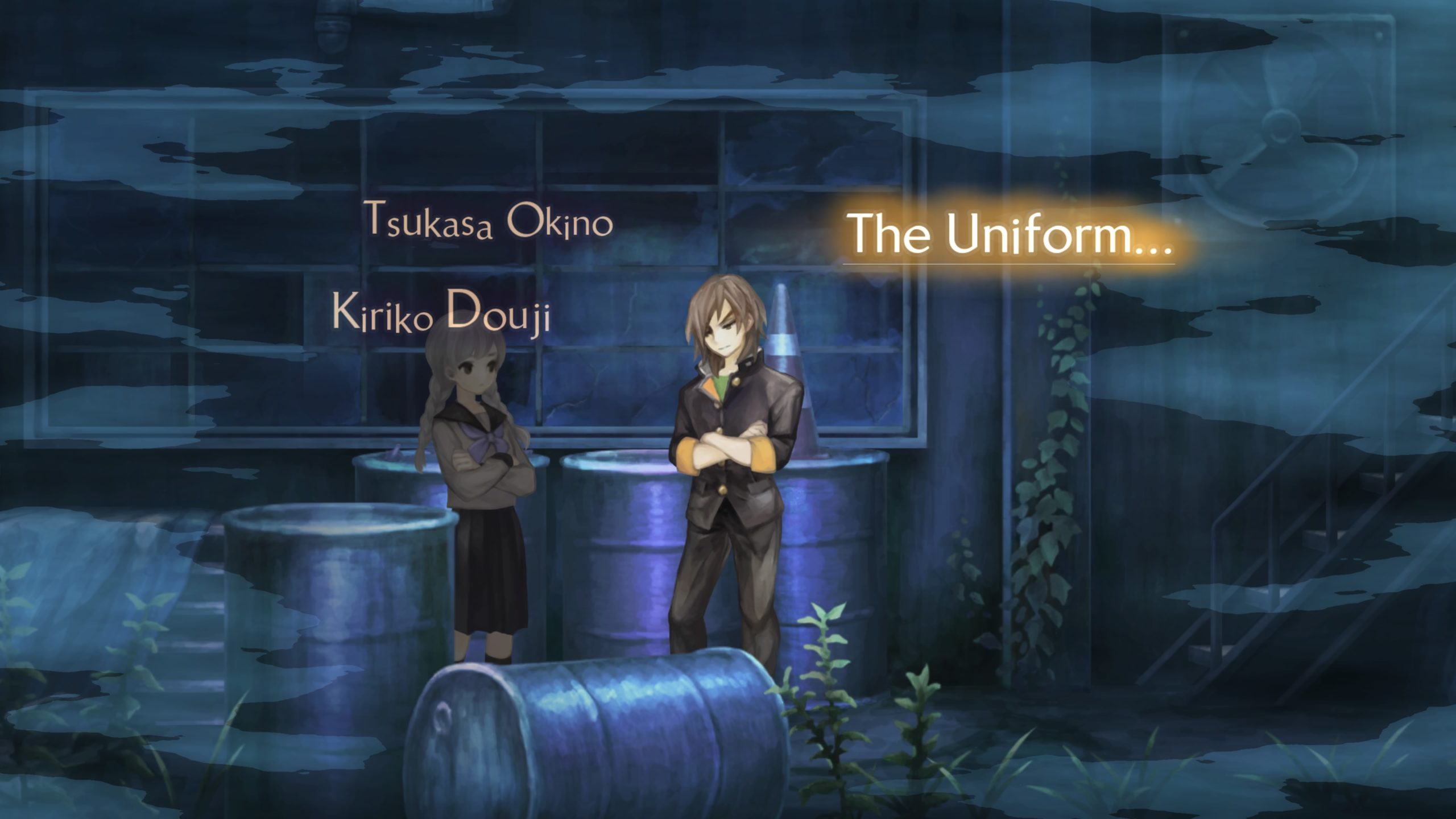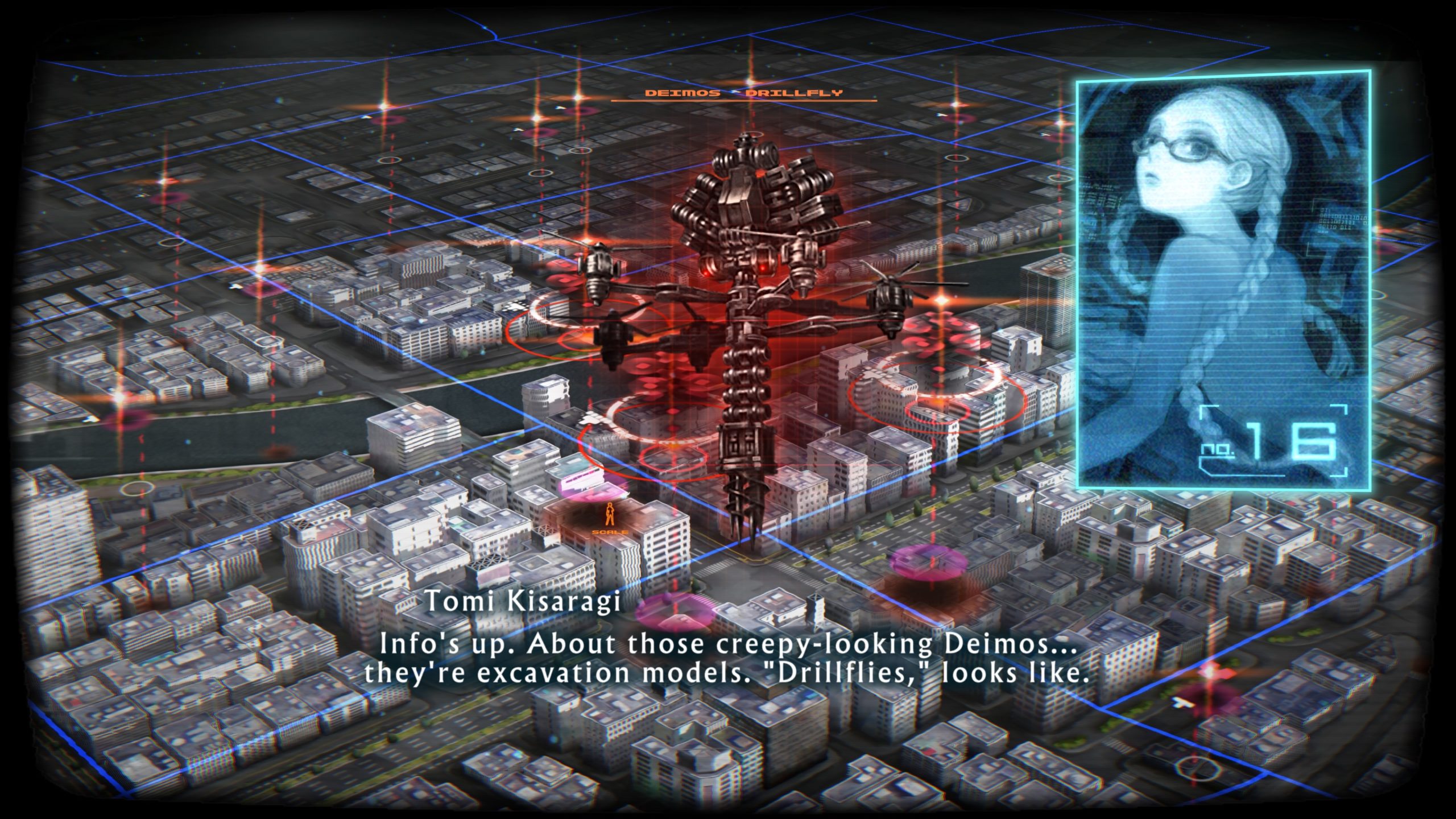Platform:
PS4
Released:
September 22, 2020
Publisher:
Atlus
Developer:
Vanillaware
13 Sentinels: Aegis Rim is a Japanese adventure title developed by Vanillaware and published by Atlus. It’s a weird mix of side-scrolling adventure narrative and real-time strategy, and was initially released to Japanese audiences in November of 2019. Its strange combination of genres made for low sales on opening weekend, but word-of-mouth quickly spread about the game’s quality and it ended up exceeding sales expectations. The game focuses on the story of 13 teenagers who learn that they are destined to pilot giant futuristic robots, called Sentinels, to defend their home from mechanical aliens. The story draws from Sci-fi stories of decades past like The War of the Worlds, E.T, Terminator, and 2001: A Space Odyssey, and combines it with a classic mecha anime setup to create a gloriously complex story of technology, mystery, and humanity.
What begins as a fairly standard action-adventure about kids piloting mechs soon evolves into something beyond your wildest imaginations. It’s revealed that these aliens – called Kaiju – are not just attacking in the present, but also the past and future. How is this possible? The answer is far more out-there than you would ever dream, and is revealed piece by piece as you play through the stories of each character.
The story and combat are separated into two different play modes, “Remembrance”, and “Destruction”. They offer deeply different gameplay experiences, but you’ll need to complete them both to get the full picture. Both modes are fully voice acted.
A Sci-Fi epic
In the Remembrance mode, you’ll play out the stories of the 13 protagonists as their home city is attacked by the Kaiju. These are 2D sidescrolling segments in which you talk to characters, inspect parts of the environment, and experience the story with gorgeous visuals. It is mostly set in the year 1985, with many of the kids going on adventures to different times and places in history to discover the truth about the Kaiju and the truth about the Sentinels. It’s got a mix of everything: drama, slice-of-life, mystery, crime, romance, and suspense. And with time travel in the mix, you’ve got multiple backdrops for it all to play out in. The characters themselves are varied in personality and design, with their own motivations and relations to the others that heighten the drama. There’s even a non-binary character, though they aren’t one of the playable 13.
Each protagonist’s story is a smaller adventure that explores how each of them comes to pilot their sentinel. Each one reveals a bit more about the story at large, revealing more of the mysteries surrounding the characters. Often, one story will present a mystery that is solved in the story of a completely different character. It can be difficult to wrap your head around so many loose threads at once, but that “Aha!” moment that comes when you’ve just connected the dots makes it all worthwhile.
“…a gloriously complex story of technology, mystery, and humanity.”
Some scenes can feel like an exposition dump, and at times seems like Vanillaware’s goal was to create the most convoluted story in the whole of video games. Seriously, this could give Metal Gear Solid a run for its money. But I appreciate that it requires some mental legwork on the part of the player, rather than spelling everything out in agonising detail. It’s up to you to but the pieces together to understand exactly what’s happened, where, and when.
You’re not completely on your own though: the game keeps an extensive archive of events and records as you go, which you can visit anytime you like. You can relive each cutscene, check up on something you might have missed or didn’t understand, and review the timeline of each character’s story. It’s also useful in gathering intel on different Kaiju and their abilities to better understand how to defeat them in combat mode.

The inclusion of a non-binary character is encouraging, even if it’s not done perfectly. Despite being one of the few Japanese publishers with multiple LGBT characters across their titles, both named and unnamed, Atlus has rarely pulled it off with any dignity or grace. Their depictions of queer people can range anywhere from openly transphobic (like the character Rin from Catherine), to a general misunderstanding of how queer people think and feel (like Naoto from Persona 4).
Atlus USA has made recent efforts to edit certain scenes that may have homophobic or transphobic content, as seen with the changes to Persona 5 Royale. However, the presentation of the non-binary character in 13 Sentinels is still a mixed bag at best. They are a great character in their own right, with their role in the story going far beyond what they happen to identify as – and they even have a budding romance with one of the male protagonists. But they are constantly misgendered throughout the entire game, despite them explicitly saying that they ‘do not fit into that binary’. It doesn’t appear to have been done maliciously, but it’s still upsetting to see.
Sentinels, roll out!
The Destruction mode is where you get down into the thick of the fighting, and use the Sentinels to week havoc on some robot aliens. The combat uses a real-time strategy system: pick your team for the battle ahead and use different attacks and abilities to take control of the battlefield. Each battle has the same objective: you must protect a central point, called the ‘Terminal’, from the Kaiju’s attack for 2 minutes or until you’ve destroyed every last Kaiju. There are many different kinds of them, so you’ll need to pick your characters and attacks to suit each enemy.
Time is paused while you choose your unit’s next move, and will resume as the unit carries out that order. There are many different attacks available to swap out and upgrade, according to the type of Sentinel your unit is piloting. This mode is fully voice acted as well, both in cutscenes and mid-battle, so it really does feel like an awesome group of heroes working together to save the day.
Attack effects are flashy and satisfying, but there is often so much happening on the screen at once that the battlefield can soon become a mess of colours. Screen clutter is a general issue in Destruction mode: the battle menus, while cool-looking, are filled to the brim with unnecessary visual flair which just ends up cluttering the screen and making the battlefield behind it invisible. There is so much on the screen all the time that your eye is drawn all over the place. Each effect and UI element is cool on their own, but altogether it can be a little distracting.

It’s a really solid combat system, being both fun on its own but also satisfying to see your plan successfully wipe out dozens of Kaiju in one sweep. That’s why it’s a bit disappointing when this combat doesn’t evolve or even get much harder as the game progresses. It’s quite puzzling, especially when the base concept and initial execution is done so well. I kept waiting for new elements to be introduced, or for it to get harder, but it just never does. By the end of the game, I never once achieved anything less than an A rank.
This is largely due to the fact that the Kaiju themselves are just too easy to kill. That’s not to say they are entirely harmless, but they are easy to predict, easy to avoid, and even when they do land a hit, it often isn’t enough to even put a dent into your unit’s HP. Once you get a handle on the basics, I doubt you’ll find much challenge here without switching to hard mode. More powerful Kaiju do eventually appear, as well as ones with special abilities, but they aren’t different enough from the common pawns to pose much of a challenge. They may take longer to kill, but they’re still sitting ducks for your Sentinels.
It’s a shame, because a bit more thought into this area could have made this combat system a real masterpiece. Everything else is here and works fantastically; it’s just missing some more interesting combat scenarios. Only in the very last few levels did I find it very challenging.
A work of art
Words can’t truly describe how beautiful this game looks, especially in story mode. Developer Vanillaware, also the creators of Dragon’s Crown and Odin Sphere, is known for their particularly gorgeous art style. Not only do they make memorable character designs, but their illustrations are always beautifully rendered in a way that makes it seem like you’re looking at a painting. And with 13 Sentinels, they’ve set a new standard. All you need is one look at these amazing visuals to know what I mean.
Story mode might be a 2D side-scroller, but it’s far from looking flat. Vanillaware has used lighting across multiple levels to create truly dynamic looking scenes. Even the more ordinary settings such as a classroom or a city street seem to completely come alive. I can imagine that a more average video game production might contain generic, re-used background characters and static animations, and it might have turned out okay. In 13 Sentinels, they form the best part of the experience. The combat is just as beautiful, though it’s harder to appreciate through all the flashing lights. If you’re an anime fan, or a fan of Vanillaware’s other titles, I could recommend this game on the visuals alone.
9
Amazing
Positive:
- Unique combination of gameplay genres
- Epic story full of mystery and adventure
- Absolutely stunning art style
- Real-time combat system is fun and engaging
Negative:
- Combat doesn't evolve enough
- Combat UI looks cluttered
13 Sentinels: Aegis Rim is an amazing experience, and not just for Sci-fi or Mecha fans. Its unique combination of genres is refreshing and exciting, and its art style is the most gorgeous thing I’ve seen all year. The combat doesn’t quite match the majesty of the rest of the game, but it’s more than good enough to see the player through. It’s definitely worth it to see the ending which, while complex and difficult to fully understand, is a masterpiece.





